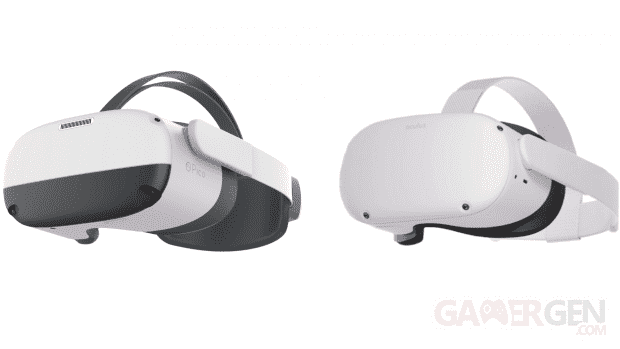Quite a few of you are wondering about the differences between the world of native games and that of the PC. VR. In this dossier we have tried to popularize the subject so that you can understand how to fully benefit from virtual reality in its two aspects.
1. Native / autonomous mode
We designate by autonomous virtual reality headsets those who do not require any external computing and image processing source to operate. 3D games and applications running on these devices use on-board hardware to operate. It is therefore customary to say that games are run natively.
Helmets VR autonomous embark in their bowels:
- A screen, which we look at through lenses;
- Player tracking devices in a three-dimensional environment on six axes (6DOF). This monitoring is provided by various sensors such as positional tracking cameras, infrared LEDs, gyroscopes and accelerometers;
- Controllers to interact with the virtual environment;
- An operating system based on the Android system;
- A battery ;
- A central processor equipped with a graphics chip borrowed from the world of smartphones, optimized to meet the needs of virtual reality and its requirements. This graphics unit allows the rendering of games and applications on the screen, taking care of the processing of images and visual effects.
These devices are said “All-in-one and transportable”. These are consoles VR portable, just like a Nintendo Switch, with everything you need to get started in the world of virtual reality, wherever you are (on the train, on the plane, on the move, etc.). Once equipped with our helmet, we are free to move around, we are not connected to anything.
2. PC mode VR
However, it is important to note that some of these devices are hybrid helmets. They can be used independently, but can also be connected to an external image processing source, like a computer. So we are talking about PC VR. In that sense, the use of headphones takes a somewhat different turn.

The term PC VR designates the fact ofrun games and applications using the power of a computer and therefore a much better graphics card than the chip embedded in the headset itself. The experiences are displayed in the helmet which acts as a simple screen, receiving the images calculated by the computer through a cable HDMI / Display Port or even USB-C, just like for our monitors. Thereby, autonomous helmets lose their transportable aspect, while the immersion and the feeling of freedom take a hit, as it is not uncommon to get tangled in the middle of the game.
However, for some time there have been wireless connection solutions, via the Wi-Fi network., like Air Link (see our tutorial), Virtual Desktop (see our tutorial), ALVR, but also solutions of cloud gaming like with Shadow PC (see our tutorial). However, it is still necessary to have a computer and a box, or even a Wi-Fi router nearby.
Apart from this philosophical and material difference, many people wonder, in the game of “who has the biggest”, what is really the difference in power between these two universes and why some swear by the PC VR.
PC world VR represents the beginnings of virtual reality as we know it today and offers the most extensive application park currently (see our dossier: Oculus Quest 1 and 2: in which stores to buy your games and VR applications?). In 2016, the year of publication of the Oculus Rift and theHTC VIVE, the market for VR was still in its infancy and the mobile chips of the time did not offer enough power to ensure an experience VR comfortable and quality. You may remember the Google Cardboard or Samsung Gear VR ? We slipped a smartphone into a semblance of a helmet offering two lenses, and took advantage of the low computing power offered then, as well as the phone screen, far from offering sufficient resolution. However, we were light years away from what the market currently offers.
Today things have changed a lot. Much progress has been made in the mobile world, powered by ever more powerful smartphones, true game consoles able to compete with our modern portable consoles. It is now possible to embed a processor equipped with a powerful and balanced graphics chip, of reduced size, in a helmet to play truly credible experiences.
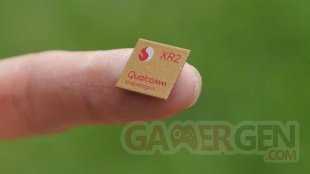
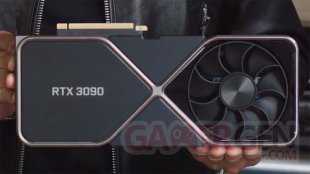
However, it is always difficult to compare a mobile processor the size of a two euro coin with a brick weighing several kilos that fits in a computer case, requiring a substantial cooling system. Computing power is second to none, just like power consumption and thermal envelope. the Snapdragon XR2 used in the Meta Quest 2 and the Pico Neo 3 develops a raw power of 1.2 TFLOPS for a thermal envelope of 10 W, while the latest graphics cards develop more than 30 TFLOPS for more than 300 W. In the game of “who has the biggest”, the PC VR will therefore remain the big winner for many years to come.
PC world VR offers experiments, in the vast majority of cases, much more successful graphically. The games played today by the chip XR2 graphically lie between the rendering of the PS3 and PS4, when the most powerful computers overtake the consoles next-gen. The memory on a computer is almost unlimited, thus, game content can be richer. We find titles bordering on 130 GB, when the most demanding on stand-alone machines do not yet exceed 40 GB, the average currently hovering around 3 GB.
Here are some visual comparisons of games Meta Quest vs PC VR :


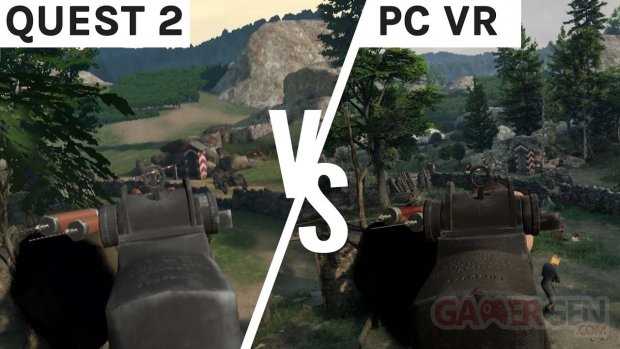
The cut is often done to the detriment of autonomous machines on the graphic aspect. The textures are much less detailed, some visual effects such as shadows, play of light, particles or smoke are absent and the number of elements displayed is much less.
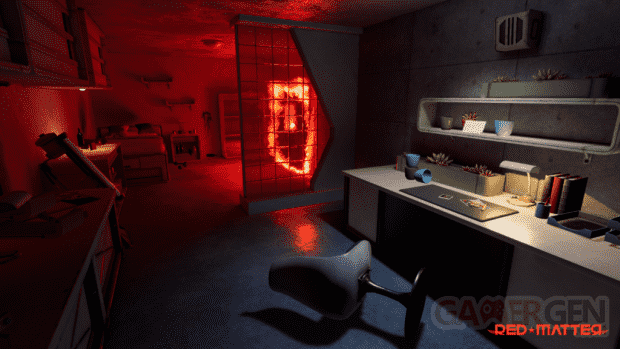
However, some native titles come out with honors as the aptly named Red Matter. The latter does not have to turn pale in front of its PC counterpart, because a huge amount of optimization work was operated on the game, which also benefits from one of the most advanced engines: theUnreal Engine. As you can see, the title benefits from high resolution textures and a very thorough lighting and reflection system.
It’s a fact, the PC universe VR it’s expensive. To equip yourself properly and start in virtual reality on a computer, it is necessary to start with a configuration exceeding € 1,000, while the Meta Quest 2 is a virtual reality headset that acts as a all-in-one console, stand-alone and ready to use for less than 500 €.
The video game industry has understood that it could not affect all players and become profitable by focusing only on the PC world. VR. PC game development VR requires more work from developers, because the content is often more extensive and the necessary material very expensive. That is why the bet is on native experiences, easier to produce and more profitable, even taking advantage of rendering engines such as Unity or theUnreal Engine. At controlled costs, the development teams are therefore working on technologies that they are familiar with and are sure to reach the majority of the virtual reality fleet. However, let’s not cry condemnation, many studios are supporting the cause of the PC VR and will continue to offer quality games regardless of the stores, but they will be fewer.
Many studios offer the porting their video games from one universe to another, because the engines used are somewhat identical. The cut is done to the detriment of autonomous machines on the graphic aspect, while keeping a content, a gameplay and a similar immersion, and this is the main thing for us players…
Small non-negligible bonus, some games purchased on theOculus Quest Store unlock their counterparts for free on theOculus Rift Store and vice versa. This is called the cross-buy. Again, remember to take a good look at the prices offered, because some games are sometimes cheaper on theOculus Quest Store that on theOculus Rift Store and vice versa. By taking the cheaper of the two, you are thus affording both versions at a lower cost. You can find the list of games cross-buy at this address.
But still, some games are cross-platform, i.e. it is possible to play the same game with players who have a PC headset VR, a Rift S, a Valve Index or a Quest.
The Meta Quest, in their simplest device, that is to say autonomous, very popular and benefit from certain titles inherited from the PC VR (and vice versa). They were able to conquer the vast majority of players, being satisfied witha catalog that is enriched with quality content every day. Meta relies on the adoption of virtual reality by the general public. It encourages developers to get started and occasionally buys many studios to give them the benefit of its expertise and resources. However, it clearly encourages the development of native applications by declaring that from now on it will no longer produce content intended for the PC world on its own, leaving this piece of the pie to other studios. Valve also seems to withdraw from the market after giving birth to one of the PC storefronts VR : Half-Life: Alyx.
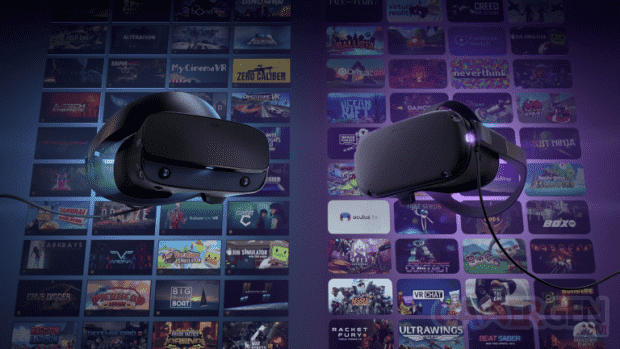
To conclude, it is up to everyone to prefer one or the other of the universes, but we could only advise you to test both. On the one hand we find a more complete graphical experience, worthy of the latest video games on consoles and PC, but requiring the investment in a good machine. On the other, we let’s find our autonomy, ease of transport and an authentic experience.
If you haven’t taken the plunge yet, you can treat yourself to a Meta Quest 2 at the house of Baker, the Fnac, Darty Where Amazon for € 349.99.
See as well : Oculus Quest 1 and 2: in which stores to buy VR games and applications?
